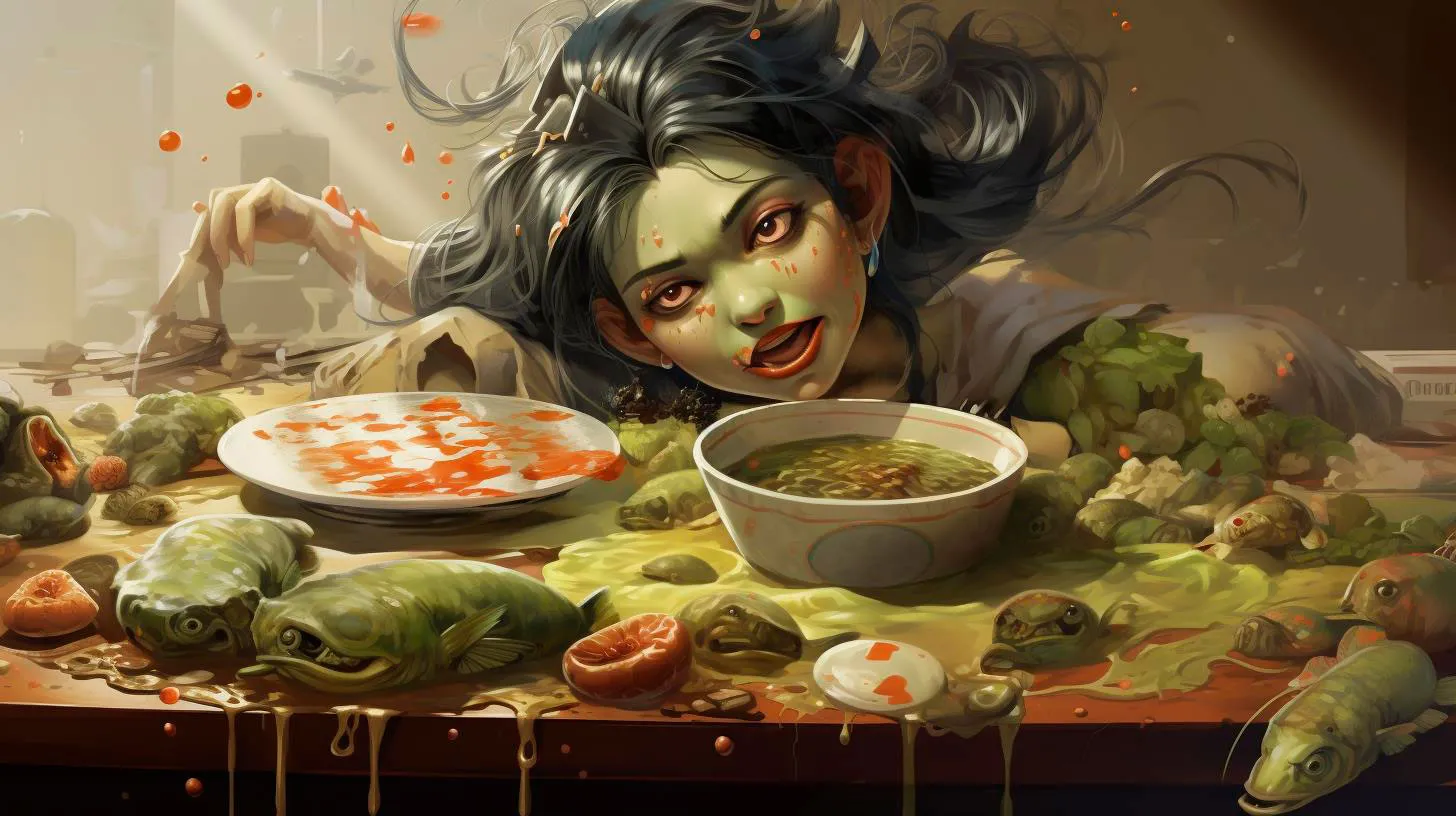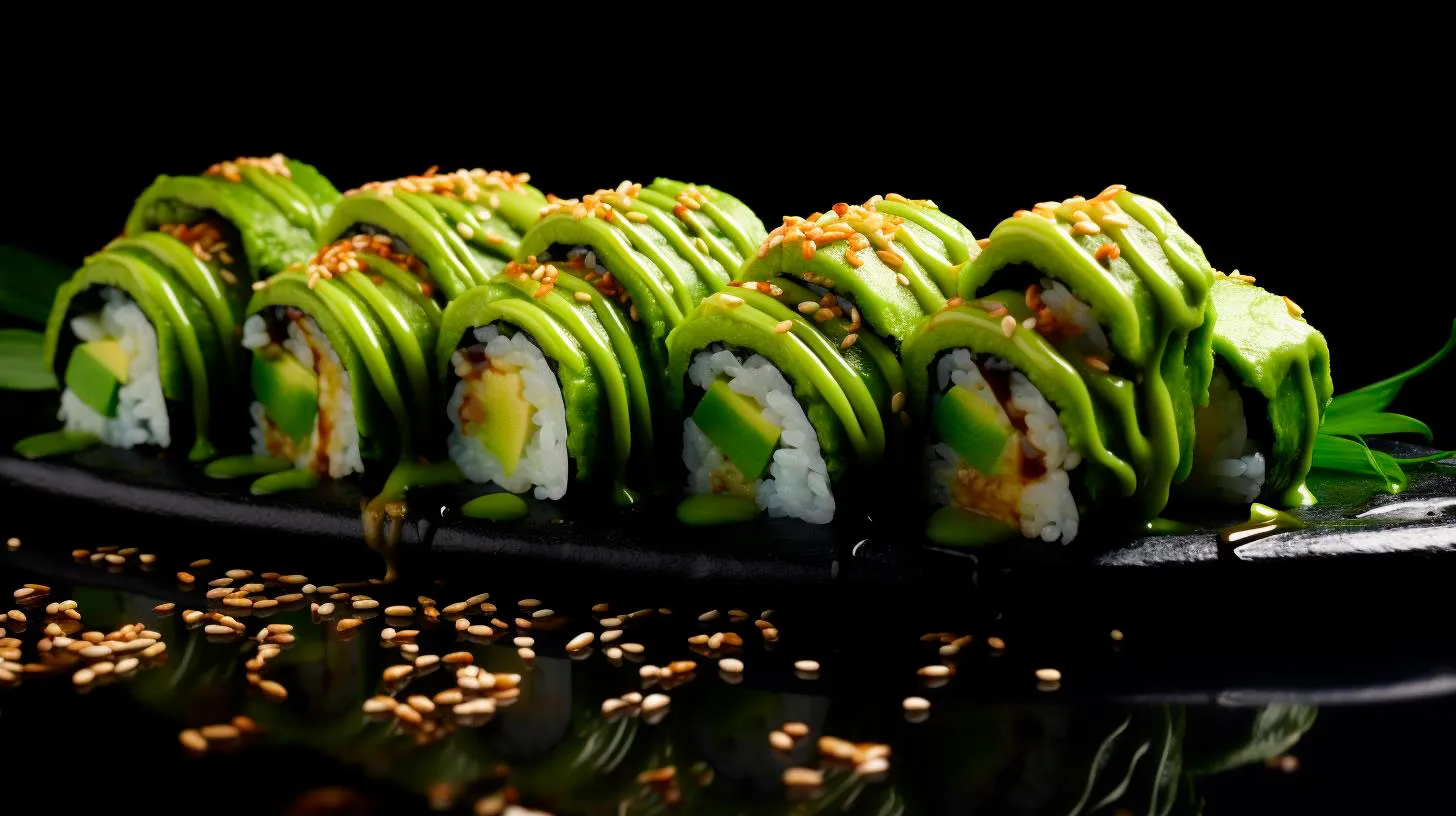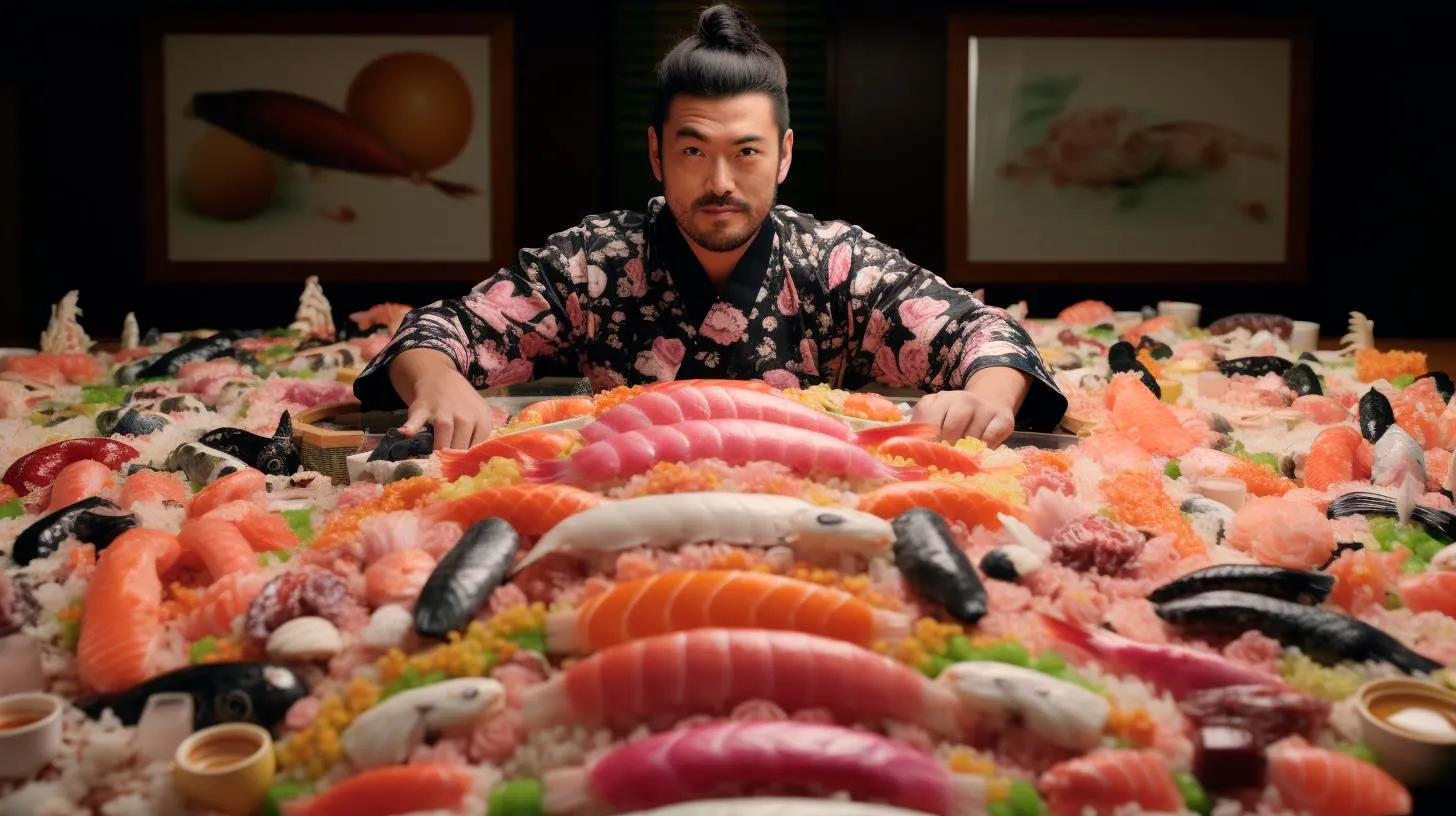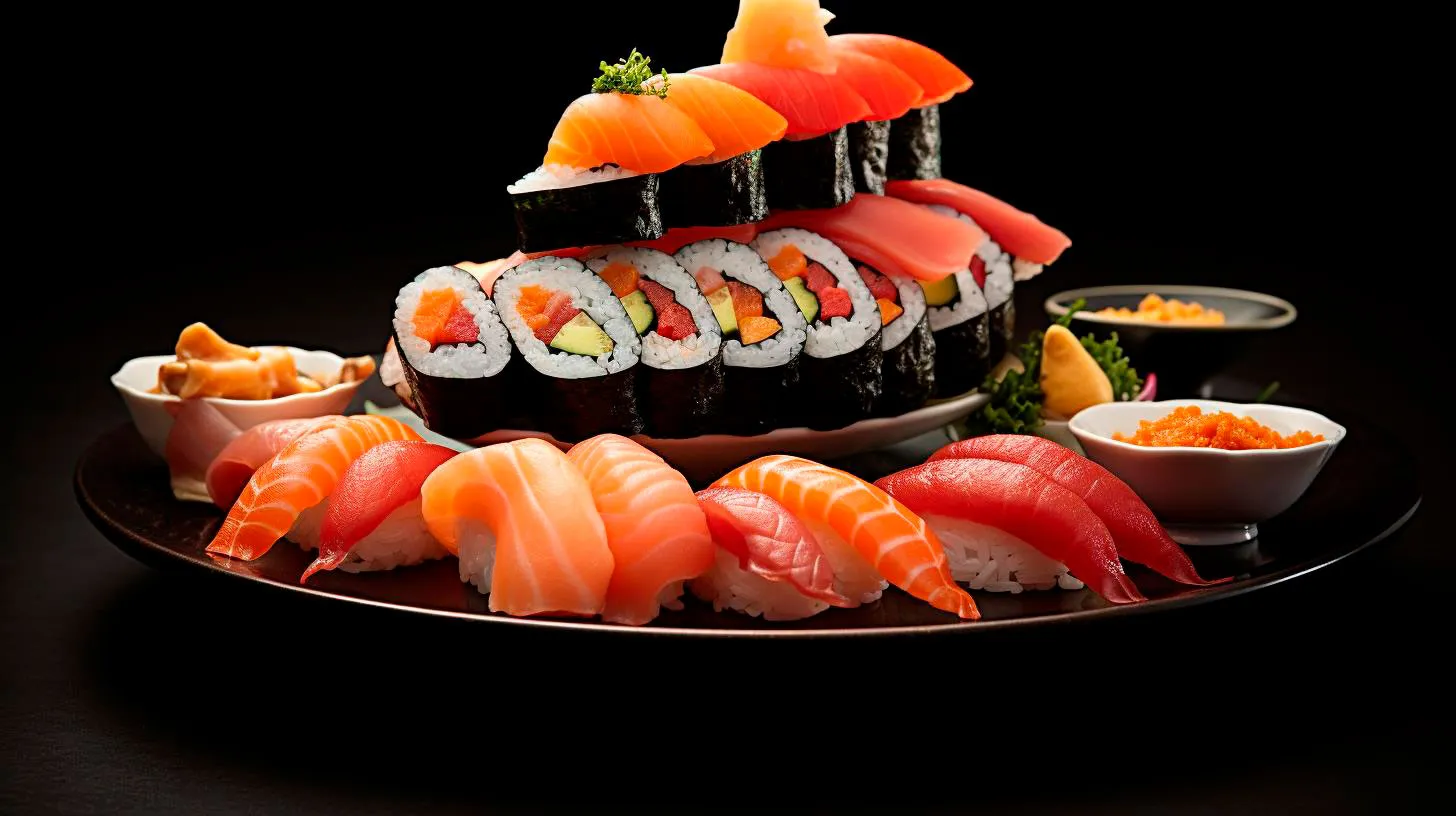The Art and Science Behind Tobiko Dyeing
Have you ever wondered how tobiko gets its vibrant color? In this article, we will delve into the art and science behind tobiko dyeing and explore the fascinating process that transforms these tiny fish eggs into the vibrant delicacy we know and love.
The Origin and Significance of Tobiko
Tobiko is derived from flying fish, a popular delicacy in many Asian countries. It is known for its delicate texture and subtle briny taste. Traditionally, tobiko was used to add a subtle accent to sushi, but over time, chefs began experimenting with different flavors and colors to create visually stunning dishes. Today, tobiko comes in various shades, including orange, black, red, green, and even gold, allowing chefs to elevate their culinary creations.
The Dyeing Process
The process of dyeing tobiko is fascinating and meticulous, requiring precision and expertise. Let’s take a closer look at the steps involved in producing vibrant and distinctive colors:
- Selection of high-quality eggs: The journey of dyeing tobiko begins with the selection of fresh, high-quality fish eggs. Chefs carefully inspect each batch, discarding eggs with imperfections or signs of deterioration.
- Preparing the dye: Various sources are used to create the dyes, including natural ingredients like beetroot juice, squid ink, wasabi, and even edible gold leaf. These dyes are mixed with a saline solution to ensure proper adhesion to the eggs.
- Dyeing the eggs: The selected fish eggs are gently placed into the prepared dye solution. They are left to soak for a specific duration, allowing the eggs to absorb the vibrant hues.
- Rinsing and drying: Once the desired color is achieved, the eggs are carefully rinsed to remove excess dye. They are then spread out on a flat surface to dry, preserving their vibrant appearance.
The Science behind Tobiko Dyeing
Dyeing tobiko is not just an artistic process; it also involves science and understanding chemical reactions. The key to achieving bright and stable colors lies in the interaction between the dye and the surface of the egg. The eggs’ outer layer, known as the chorion, acts as a protective barrier and also affects the color absorption process. The saline solution used in the dyeing process helps break down this barrier, allowing the color to penetrate the eggs effectively.
The composition and acidity level of the dye also play a significant role. Certain natural ingredients, like beetroot juice or wasabi, have distinct pigments that react differently with the eggs, resulting in varied colors. Chefs carefully balance the concentration and acidity levels to achieve the desired shade without compromising the eggs’ texture or flavor.
The Advantages of Tobiko Dyeing
The art of tobiko dyeing goes beyond the visual appeal it adds to sushi. Here are a few advantages of dyeing tobiko:
- Enhanced presentation: Vibrant tobiko adds a pop of color to sushi rolls, enhancing their visual appeal and making them a delight to the eyes.
- Flavor variety: By incorporating different natural ingredients into the dyeing process, chefs can infuse tobiko with a range of flavors, offering customers a diverse sensory experience.
- Creative expression: Tobiko dyeing allows chefs to showcase their creativity and imagination, using colors to represent different tastes or themes. This opens up endless possibilities for unique and visually stunning sushi creations.
- Customization: With tobiko dyeing, chefs can cater to specific preferences or dietary restrictions by offering a wide range of colors and flavors to suit individual tastes.
Key Takeaways
The art of tobiko dyeing combines both artistic flair and scientific understanding to produce visually striking and flavorful fish eggs. Here are the key takeaways from this exploration:
- Tobiko is derived from flying fish and is known for its delicate texture and subtle briny taste.
- The dyeing process involves selecting high-quality eggs, preparing the dye, dyeing the eggs, and rinsing and drying them.
- The science behind tobiko dyeing lies in the interaction between the dye and the eggs’ chorion, as well as the composition and acidity levels of the dye.
- Tobiko dyeing offers advantages such as enhanced presentation, flavor variety, creative expression, and customization.
- Experimentation with different natural ingredients allows chefs to produce a wide range of colors and flavors, elevating the sushi experience for customers.
Next time you enjoy sushi adorned with vibrant tobiko, take a moment to appreciate the artistry and precision that goes into creating this aesthetically pleasing delicacy. The fusion of art and science in tobiko dyeing truly makes it an exceptional culinary experience.
Unveiling the Meticulous Techniques of Tobiko and Masago Dyeing
But have you ever wondered how these tiny pearls get their vivid shades? It’s all thanks to the meticulous dyeing techniques used to transform their natural hues into a spectrum of eye-catching colors.
The Artistry of Tobiko and Masago Dyeing
Tobiko and Masago both come from the roe of various fish species, contributing to their distinct flavors and textures. However, their natural colors may not always align with the visual aesthetics that chefs aim to achieve. That’s where dyeing techniques come into play – giving these delicate pearls a visual charm that tantalizes both the taste buds and the eyes. Here’s a peek into the artistry behind these dyeing techniques:
1. Natural Dyeing
Natural dyeing is a traditional method that involves using organic ingredients to tint Tobiko and Masago. Chefs turn to natural sources like beet juice, squid ink, or vegetable extracts to infuse the eggs with colors that are free from synthetic additives. This technique not only adds a touch of vibrancy but also caters to those seeking a more organic culinary experience.
Key Takeaway:
- Natural dyeing offers a healthier alternative to synthetic food coloring.
- Beet juice, squid ink, and vegetable extracts are commonly used natural dyes.
- Restaurants and home cooks alike can embrace this eco-friendly technique.
2. Artificial Dyeing
Artificial dyeing involves the use of synthetic food coloring to achieve a wide range of vibrant hues. Chefs have access to an assortment of food coloring agents specifically designed for culinary applications. These agents ensure the colors remain true under different cooking conditions, providing consistent and visually appealing results.
Key Takeaway:
- Artificial dyeing allows for a broader spectrum of colorful options.
- Synthetic food coloring agents ensure color stability during cooking.
- Chefs can unleash their creativity and experiment with unique color combinations.
Advantages of Dyeing Tobiko and Masago
Now that we understand the techniques behind dyeing Tobiko and Masago let’s explore the advantages of incorporating these colorful pearls into culinary creations:
1. Aesthetically Pleasing
The vibrant colors of dyed Tobiko and Masago are undeniably visually appealing. The incorporation of these eye-catching pearls elevates the overall presentation of dishes, making them more enticing to diners. Whether used as a garnish or a standalone ingredient, the color infusion adds a touch of elegance to any culinary masterpiece.
2. Enhanced Flavor Experience
Dyeing Tobiko and Masago allows for the creation of various flavor profiles. For example, green-colored pearls can be infused with wasabi to add a spicy kick, while red or orange pearls can be flavored with yuzu for a tangy twist. Chefs can tailor the color and flavor combinations to match their culinary vision, resulting in a multi-dimensional taste experience.
3. Customization and Creativity
Dyeing techniques provide chefs with the freedom to create customized color palettes according to their dish’s theme and presentation. This flexibility allows for endless possibilities, from vibrant rainbows of colors to subtle gradients. Chefs can unleash their creativity and cater to specific dietary requirements, cultural preferences, or themed events using the artistry of dyeing techniques.
The Rising Popularity of Colored Tobiko and Masago
Colored Tobiko and Masago have gained significant popularity worldwide, particularly within the sushi culture. Here are some industry statistics that highlight their prominence:
- In 2020, the global sushi market was valued at over $16 billion, with a projected growth of 3.5% between 2021-2026.
- Demand for visually appealing sushi presentations, including colored tobiko and masago, has witnessed a surge with the rise of social media platforms.
- Food enthusiasts and Instagram influencers seek out unique and visually striking dishes, boosting the demand for vibrant and colorful culinary creations.
As the culinary landscape evolves, chefs continue to explore innovative ways to captivate food lovers. The meticulous techniques of dyeing Tobiko and Masago are prime examples of the artistry and creativity that not only enhance the flavors but also elevate the visual appeal of dishes. So, the next time you savor sushi adorned with these tiny, vibrantly colored pearls, you can appreciate the skill and craftsmanship involved in bringing this culinary delight to your plate.
From Raw Ingredients to Eye-Catching Colors: Diving into Tobiko and Masago Dyeing
In this article, we will dive into the world of tobiko and masago dyeing, uncovering the secrets behind their eye-catching colors.
The Process of Dyeing Tobiko and Masago
Tobiko and masago are types of fish roe commonly used in sushi. While tobiko comes from flying fish, masago is derived from the capelin fish. Although both are naturally available in different colors, the demand for vibrant and varied shades has led to the development of artificial dyeing techniques.
The process starts with harvesting the raw roe, which is carefully separated from the fish and cleaned to remove any impurities. The roe is then transferred to a container and mixed with a specific dye solution. The eggs are gently stirred to ensure an even coating, and they are left to soak in the dye for a predetermined period, allowing the color to penetrate the outer layer of the eggs.
Once the desired shade is achieved, the roe is rinsed thoroughly to remove any excess dye. After rinsing, the colorful tobiko or masago is carefully strained and packed into containers for further processing or immediate use in sushi preparation.
Advantages of Dyeing Tobiko and Masago
While the natural colors of tobiko and masago are beautiful in their own right, dyeing these roe varieties offers several advantages:
- Enhanced Aesthetic Appeal: Dyeing allows for a wider range of colors beyond what is naturally available. This opens up endless creative possibilities for sushi chefs, enabling them to create visually stunning dishes.
- Consistent Supply: By dyeing tobiko and masago, suppliers can maintain a consistent supply of the desired colors throughout the year. This ensures that sushi restaurants can always serve their customers with vibrantly colored options.
- Extended Shelf Life: Dyeing the roe can also help extend its shelf life. By inhibiting the growth of bacteria, the dyeing process helps preserve the quality and freshness of the tobiko and masago over a longer period, ensuring top-notch taste and appearance.
Key Takeaways
- Tobiko and masago undergo a dyeing process to achieve their vibrant colors for sushi.
- The roe is cleaned, mixed with a dye solution, stirred, and soaked for a specific time.
- Advantages of dyeing include enhanced aesthetic appeal, consistent supply, and extended shelf life.
So next time you indulge in a plate of sushi, take a moment to appreciate the artistry that goes into creating its visually striking colors. Thanks to the dyeing process, tobiko and masago have transformed from simple raw ingredients into eye-catching culinary masterpieces. Whether you prefer the bright orange, fiery red, or even electric green, you can now enjoy sushi that appeals not only to your taste buds but also to your sense of visual delight.
Exploring the Vibrant World of Masago Dyeing
What is Masago Dyeing?
Masago dyeing is an ancient Japanese dyeing technique that involves using small rice grains to create intricate patterns and designs on fabrics. Traditionally, this technique was used to create garments for the Japanese nobility, but today it has become a favored method among textile artists and enthusiasts worldwide.
The Process of Masago Dyeing
The process of Masago dyeing involves several steps that require precision, skill, and creativity. Let’s take a closer look at these steps:
- Preparation: The fabric to be dyed is thoroughly washed to remove any dirt or impurities that may affect the final result. Once cleaned, the fabric is dampened to ensure better color absorption.
- Design Planning: Masago dyeing offers a wide range of design possibilities. The rice grains are strategically placed on the fabric, creating patterns, shapes, or images. The grains act as a resist, preventing the dye from reaching the fabric beneath.
- Dyeing: The fabric is then immersed in a dye bath, allowing the color to permeate the areas without rice grains. Different colors can be added successively to create complex and layered designs.
- Fixing and Finishing: Once the desired color intensity is achieved, the fabric is rinsed and then fixed using heat or a fixing agent. This ensures that the colors remain vibrant even after washing.
The Advantages of Masago Dyeing
Masago dyeing offers several advantages that make it an attractive choice for textile artists and designers:
- Unique and Vibrant Designs: The use of rice grains allows for intricate patterns and designs that can’t be achieved with other dyeing techniques. The resulting fabric has a one-of-a-kind appearance.
- Environmentally Friendly: Masago dyeing primarily uses natural dyes, reducing the environmental impact of the dyeing process. It aligns well with the increasing demand for sustainable textile production.
- Cost-effective: The materials required for Masago dyeing are easily accessible and affordable, making it a cost-effective option for artists and small-scale designers. Additionally, the technique allows for the reuse of materials, reducing wastage.
Key Takeaways
Masago dyeing is an ancient Japanese dyeing technique that uses rice grains to create intricate patterns and designs on fabrics. It offers unique advantages such as vibrant designs, environmental friendliness, and cost-effectiveness.
By exploring the vibrant world of Masago dyeing, we gain insight into a traditional technique that seamlessly fuses artistry and craftsmanship. Whether you are a textile enthusiast or a designer looking for innovative techniques, Masago dyeing is definitely worth exploring.



